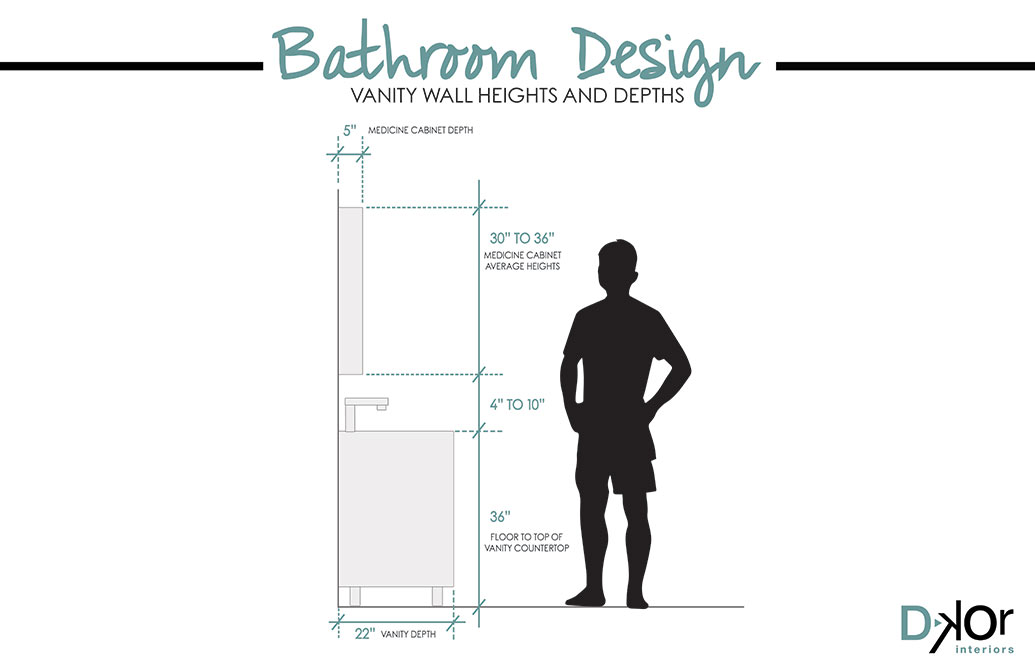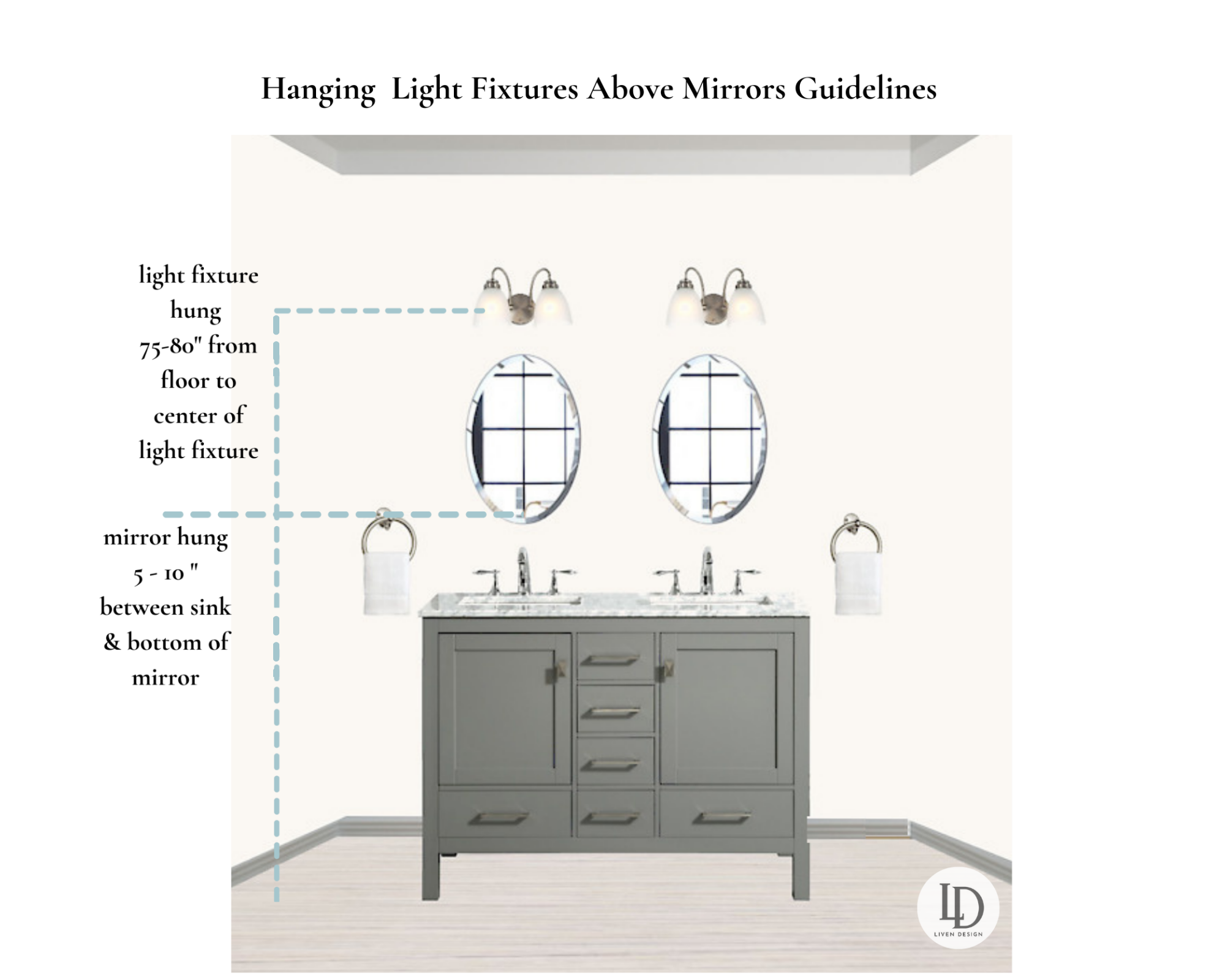Understanding Bathroom Vanity Height Standards

The height of a bathroom vanity is crucial for ensuring comfort, accessibility, and ease of use. Properly chosen vanity height allows users to reach the sink comfortably and perform daily hygiene tasks without strain. Understanding standard bathroom vanity heights, particularly those adhering to accessibility guidelines, is essential for creating a functional and user-friendly bathroom space.
Standard Bathroom Vanity Heights for Different Users
Bathroom vanity heights are often determined based on the intended user group. The Americans with Disabilities Act (ADA) provides guidelines for accessible bathroom designs, including vanity heights. These guidelines ensure that people with disabilities can access and use bathroom facilities independently.
- ADA Accessible Vanity Height: The ADA recommends a minimum vanity height of 34 inches (86.4 cm) from the floor to the top of the sink. This height allows wheelchair users to comfortably reach the sink and perform hygiene tasks.
- Standard Residential Vanity Height: For general residential use, standard vanity heights typically range from 30 to 36 inches (76.2 to 91.4 cm). This range accommodates a wider range of users, including those of average height and those who prefer a slightly higher or lower vanity.
- Children’s Vanity Height: To ensure children’s comfort and safety, children’s vanities are designed at a lower height. A typical children’s vanity height ranges from 24 to 28 inches (61 to 71 cm), allowing young users to reach the sink easily and independently.
Comparison of Standard Vanity Heights
The following table provides a concise comparison of standard vanity heights for different applications:
| Application | Standard Height (inches) | Standard Height (cm) |
|---|---|---|
| ADA Accessible | 34 | 86.4 |
| Standard Residential | 30-36 | 76.2-91.4 |
| Children’s Vanity | 24-28 | 61-71 |
Factors Influencing Vanity Height Selection

The selection of the ideal bathroom vanity height is a critical aspect of bathroom design, as it significantly impacts usability, accessibility, and overall aesthetic appeal. While adhering to standard vanity heights is a good starting point, numerous factors can influence the final decision. These factors, when carefully considered, can ensure a vanity that perfectly complements the space and caters to the user’s specific needs.
Ceiling Height
The height of the ceiling can directly impact the perceived spaciousness of the bathroom and influence the choice of vanity height. In rooms with low ceilings, a tall vanity might create a feeling of claustrophobia, while a shorter vanity can visually enhance the space. Conversely, a high ceiling allows for greater flexibility in vanity height selection, offering more possibilities for design and functionality. For instance, a taller vanity can accommodate larger mirrors and more storage space, enhancing the overall visual appeal of the room.
Sink Bowl Size and Style
The size and style of the sink bowl play a significant role in determining the optimal vanity height. A larger sink bowl, particularly a vessel sink, might require a taller vanity to ensure comfortable access and prevent splashing. Conversely, a smaller, integrated sink might be better suited for a lower vanity height. Similarly, the style of the sink, such as an undermount or a top-mount sink, can influence the ideal vanity height. An undermount sink, which sits flush with the countertop, might necessitate a slightly higher vanity for ease of use.
User Height and Reach
The user’s height and reach are paramount in selecting the right vanity height. A vanity that is too high can be uncomfortable and inconvenient for shorter individuals, making it difficult to access the sink and perform daily routines. Conversely, a vanity that is too low can cause back strain and discomfort for taller users. It is crucial to consider the average height of the users who will be using the bathroom and adjust the vanity height accordingly.
For instance, a vanity height of 34 inches is generally considered comfortable for individuals with an average height of 5’4″, while a height of 36 inches might be more suitable for those who are taller.
Space and Functionality
Vanity height also plays a significant role in maximizing space and functionality within the bathroom. A taller vanity can accommodate more storage space, offering ample room for toiletries, towels, and other bathroom essentials. However, in smaller bathrooms, a shorter vanity might be more practical, allowing for better movement and a more spacious feel.
A taller vanity might also be a better choice if the bathroom features a large mirror or other decorative elements that require additional space.
Tips for Achieving the Perfect Vanity Height: Bathroom Vanity Height Tips

Bathroom vanity height tips – Now that you understand the factors influencing vanity height, let’s delve into practical tips for achieving the ideal height for your bathroom. Properly measuring and incorporating features will ensure a comfortable and functional vanity experience.
Measuring for the Ideal Vanity Height
Accurate measurement is crucial for determining the ideal vanity height. The following steps provide a comprehensive guide for achieving the perfect fit:
- Determine Your Sink Height Preference: Start by standing comfortably in front of your sink. Extend your arms out in front of you, and measure the distance from the floor to your elbows. This measurement provides a starting point for your desired sink height. Remember, the elbow height method is a general guideline. Adjust it based on your personal preferences and the overall design of your bathroom.
- Consider Countertop Thickness: Factor in the thickness of your countertop when measuring. A typical countertop ranges from 1.5 to 2 inches. Add this thickness to your desired sink height to calculate the overall vanity height. For example, if your preferred sink height is 34 inches and your countertop is 2 inches thick, the total vanity height would be 36 inches.
- Account for Base Cabinet Height: Most standard base cabinets have a height of 30 inches. However, you can find cabinets with varying heights, from 28 to 32 inches. Choose a cabinet height that complements your desired sink height and countertop thickness. Ensure the combined height of the base cabinet and countertop matches your ideal sink height.
- Measure the Space: Before purchasing a vanity, measure the available space in your bathroom. Consider the width, depth, and clearance needed for doors and other fixtures. Ensure that the vanity you choose fits comfortably within the designated area.
Benefits and Drawbacks of Adjustable Vanities, Bathroom vanity height tips
Adjustable vanities offer flexibility in achieving the perfect height. However, they come with advantages and disadvantages:
- Benefits: Adjustable vanities allow you to customize the height to suit your needs and preferences. They are particularly useful for individuals with varying heights or those who may experience changes in mobility over time. They offer a level of personalization that standard vanities cannot provide.
- Drawbacks: Adjustable vanities can be more expensive than standard vanities. The adjustment mechanisms may be less durable and prone to wear and tear over time. They may also be less aesthetically pleasing, depending on the design and finish.
Creating Custom Vanity Heights
If you’re looking for a more permanent solution, consider these techniques for creating custom vanity heights:
- Countertop Modifications: For a subtle height adjustment, consider using a countertop with a built-in raised lip. This lip can add an extra inch or two to the overall sink height, providing a more comfortable experience. Alternatively, you can create a custom countertop with a raised edge using a variety of materials, such as wood, stone, or laminate.
- Raised Bases: Adding a raised base to your vanity can significantly increase its height. You can use pre-fabricated base units or create a custom base using wood or other materials. The raised base can be integrated seamlessly with the vanity’s design, creating a cohesive look.
Enhancing Vanity Functionality with Accessories
Adding accessories and features can enhance the functionality and comfort of your vanity at various heights:
- Pull-Out Drawers: Pull-out drawers provide easy access to toiletries and other bathroom essentials, regardless of vanity height. They are especially beneficial for lower vanities, as they eliminate the need to bend or reach down. Choose drawers with smooth glides and ample storage space to maximize organization.
- Mirrors: Mirrors can visually enlarge a space and create a sense of openness. Consider using a mirror with a shelf or integrated lighting to enhance functionality. For lower vanities, a larger mirror positioned higher can create a more balanced look and improve visibility.
So, you’re thinking about upgrading your bathroom vanity? Good call! But before you go all out on a fancy new sink, remember that vanity height is crucial. A too-high vanity will make you feel like a hobbit, and a too-low one will leave you hunching like Quasimodo.
If you’re in San Diego, you’ve got a ton of options for bathroom furniture, from sleek modern styles to classic Victorian designs. Check out bathroom furniture San Diego to get some inspiration! And remember, a good vanity height is the key to a comfortable and stylish bathroom experience.
Bathroom vanity height is a crucial consideration, especially if you’re a tall person like me who’s constantly bumping their head on low-hanging cabinets. And if you’re struggling with limited space, consider an 18 deep bathroom vanity – they’re surprisingly spacious and can make a huge difference.
But remember, the right height is key to avoiding that awkward hunching or painful backache while you’re trying to freshen up.